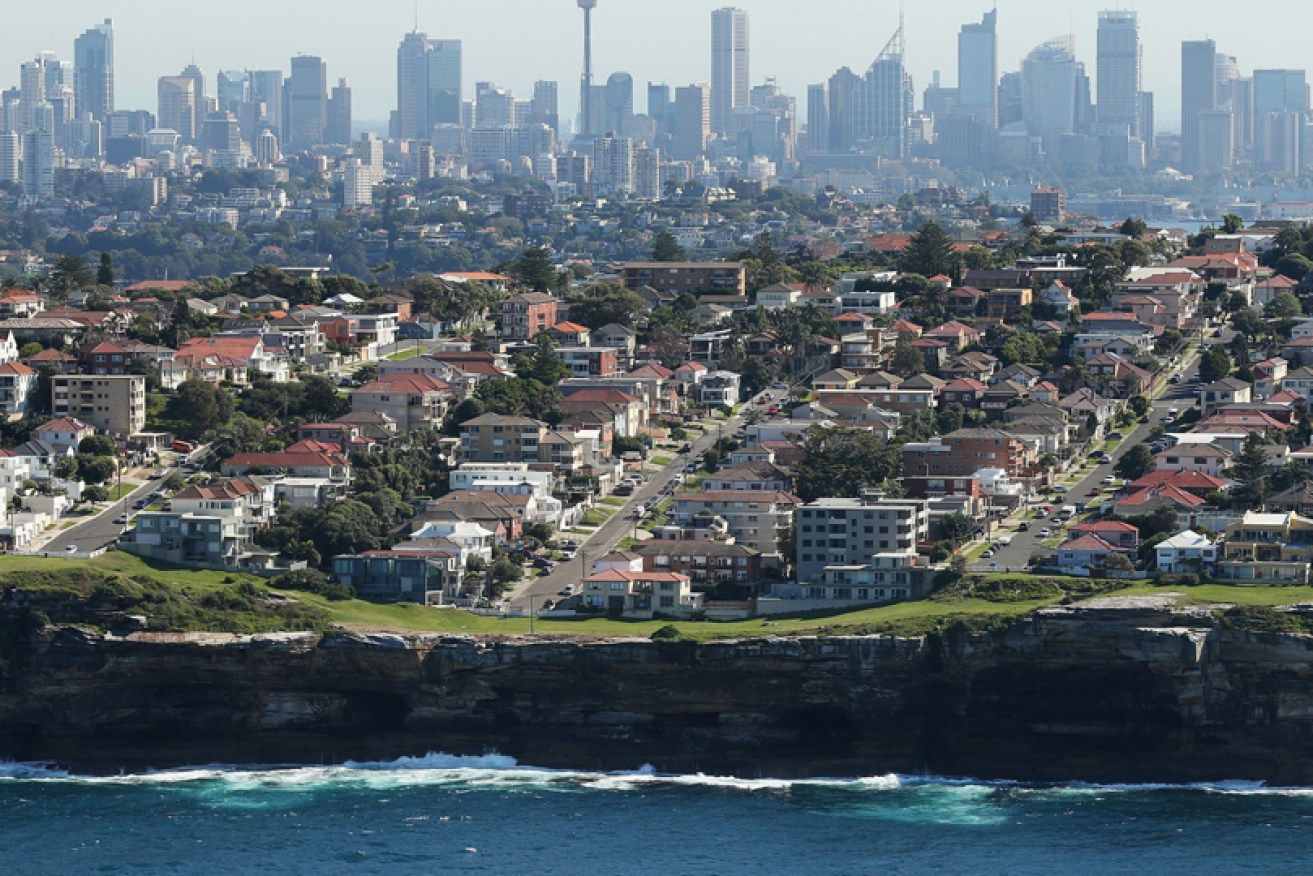Report: Australians face $700b wealth wipeout

A view of Dover Heights and neighbouring areas of Sydney, where house prices have fallen after years of increases. Photo: Getty
Australian households are facing a collective $700 billion cut to their wealth from the need to wind back the massive amounts of debt built up during the property boom.
In a survey of global economies, the giant US investment bank Morgan Stanley found Australia’s economy carried the greatest risk from cutting back on household debt.
“Australia looks most exposed, combining high household and external leverage, weak domestic housing conditions and potential further macroprudential and structural/tax policy adjustments ahead,” Morgan Stanley concluded.
Australia’s predicament is made worse by the need to cut debt occurring during a period of falling house prices and at a time when the household savings rate is a wafer-thin 1 per cent of disposable income.
“Most concerning about the potential impact of a deleveraging phase for Australian households is the narrow savings buffer that is currently carried,” Morgan Stanley commented.
“From the perspective of wealth effects, our forecast 10-to-15 per cent real house price decline would combine with 20 per cent debt/asset gearing levels to inflict a serious dent in net worth.
If mapped across the value of all land/property owned by households, it would equate to $700 billion of wealth devaluation.”
Morgan Stanley’s detailed 68-page report combines three key measures of household debt – debt-to-income, debt-to-assets, and the debt servicing ratio – to create broad-based global risk indicator.
Alarmingly, Australia is at, or near the top, of all three measures.
“Our Household Deleveraging Risk Indicator suggests that Australia is the economy most at risk of household deleveraging, coming in near the top across all three aspects.
“Leverage and debt-service is high and the second-most externally funded, while falling house prices and slowing credit growth suggest more imminent risks of deleveraging.”
Household debt at ‘tipping point’
The Morgan Stanley report argues global economies have reached a “tipping point” in the household debt cycle, as the average household debt-to-GDP ratio has increased from 54 per cent to 87 per cent over the past decade.
This has been fuelled low interest rates funding real estate booms across most developed economies.
“Debt effectively increases current growth at the expense of future growth,” Morgan Stanley noted.
“Today’s debt, bolstering housing investment and consumption, will require savings tomorrow, reducing consumption and flows into the housing market.”
While some economies have witnessed a decline in household debt-to-income ratios in the past decade – most notably the US, euro area and Britain – others, including Australia, Canada, New Zealand and the Scandinavian countries have continued to borrow heavily.
Central banks and financial regulators have been focusing on financial stability, using so-called macroprudential tools to rein-in risky lending.
In Australia, that has led to restrictions on interest-only loans and the likelihood of tougher debt-to-income lending limits in the wake of the banking royal commission.

The Housing boom could result in a debt hangover. Photo: ABC
In addition, there remains a significant question about the future of negative gearing, and the deductibility of rental losses, if Labor wins the federal election next year.
Morgan Stanley said the Australian economy has remained resilient, with GDP growth above 3 per cent and unemployment edging down to 5 per cent, but this is unlikely to continue.
“Risks are building, given the consumer has supported consumption by tapping into their savings rate, which has fallen to 1 per cent, while the residential construction cycle is peaking now, and will exert a drag on currently record-high construction employment,” it warned.
“Credit remains tight and an ongoing overbuild is driving weakness in the outlook.
“We now see a longer 10 per cent to 15 per cent [house price] correction — versus 5 per cent to 10 per cent previously — this would make it the deepest real house price fall since the early-1980s.
Not if, but by how much
Housing forecasts have gone from disagreement about whether home prices will fall to debates about how much they’ll decline.
“Strength in the global economy and support from public infrastructure spend are mitigating these headwinds, but the risk of a longer/deeper than usual balance sheet recession remains elevated, if these conditions change.”
The high levels of household debt and the Reserve Bank’s focus on financial stability probably mean any hikes in official rates are likely to be gradual.
While a rate rise from the RBA may kick the Australian dollar higher, Morgan Stanley argues the effect will fade.
The Australian dollar is already screening as the weakest for leverage in Morgan Stanley’s spreadsheet – with the investment bank saying it will only get weaker in coming years.
-ABC








